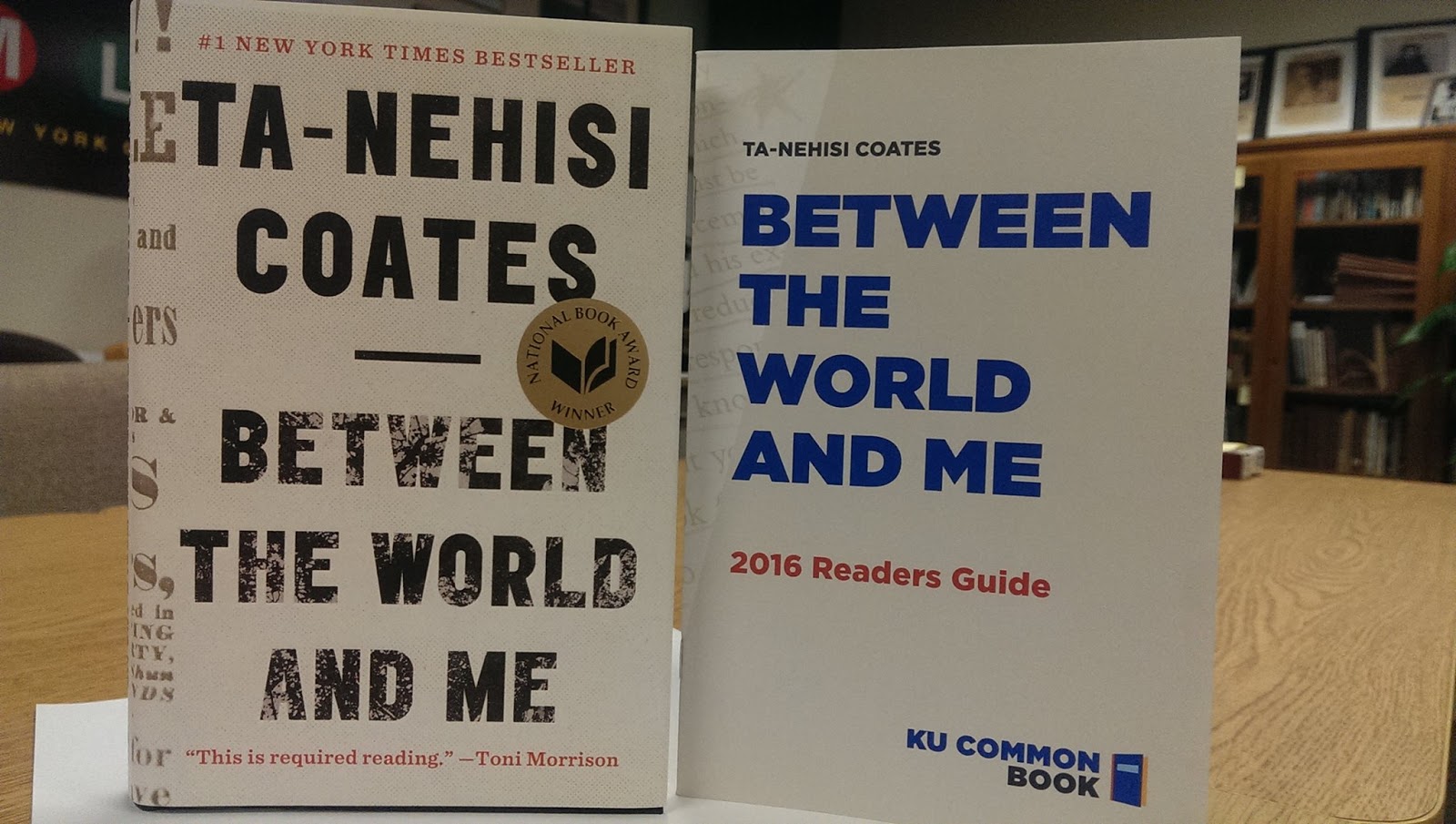Ta-Nehisi Coates’s Between the World and Me: KU Common Book 2016-17
Between the World and Me, Ta-Nehisi Coates’s critically acclaimed second book and the winner of 2015 National Book Award for nonfiction has been chosen by the University of Kansas as the 2016-2017 common book at 'BETWEEN THE WORLD AND ME' NAMED 2016-2017 KU COMMON BOOK. The KU Common Book Program is run by the Office of First Year Experience with the goal of creating a diverse strong community and shared academic experience among first year students, faculty and staff.

In Between the World and Me, Coates writes a letter to his young son in an attempt to address our nation’s past and current racial history.
The abstract from Goodreads.com reads:
Coates shares with his son—and readers—the story of his awakening to the truth about his place in the world through a series of revelatory experiences, from Howard University to Civil War battlefields, from the South Side of Chicago to Paris, from his childhood home to the living rooms of mothers whose children’s lives were taken as American plunder. Beautifully woven from personal narrative, reimagined history, and fresh, emotionally charged reportage, Between the World and Me clearly illuminates the past, bracingly confronts our present, and offers a transcendent vision for a way forward.
In Ta-Nehisi Coates's 'Between the World and Me', Michelle Alexander, author of The New Jim Crow (2010), explains how she approached Coates’s book in the same way she approached James Baldwin’s The Fire Next Time (1963), a book that evidently inspired Between the World and Me. In a similar fashion, Baldwin writes a letter to his nephew to talk about the racial injustices of the time. While Alexander acknowledges that Between the World and Me did not live up to her expectations, she recognizes that Coates’s book is simply and purposely unfinished. Alexander writes:
But here we reach a fork in the road. Baldwin, in writing to his nephew, does not deny the pain and horror of American notions of justice — far from it — but he repeatedly emphasizes the young man’s power and potential and urges him to believe that revolutionary change is possible against all odds, because we, as black people, continue to defy the odds and defeat the expectations of those who seek to control and exploit us.
Coates’s letter to his son seems to be written on the opposite side of the same coin. Rather than urging his son to awaken to his own power, Coates emphasizes over and over the apparent permanence of racial injustice in America, the foolishness of believing that one person can make a change, and the dangers of believing in the American Dream.
She concludes:
On the second reading, my frustration diminished. I came to believe that the problem, to the extent there is one, is that Coates’s book is unfinished. He raises numerous critically important questions that are left unanswered.
Perhaps Coates hasn’t yet discovered for himself the answers to the questions he poses in Between the World and Me. But I suspect that he is holding out on us. Everything he has ever written leads me to believe he has more to say. He may imagine that we are better off figuring out for ourselves the true nature of the Dream and what it means to be engaged in meaningful Struggle. But I believe we could only benefit from hearing what answers Coates may have fashioned for himself. Whether you agree or disagree, one of the great joys of reading Ta-Nehisi Coates is being challenged in ways you didn’t expect or imagine.
You can follow the KU Common Book Reader’s Guide and blog for the latest campus events, activities, and resources to support your reading of Between the World and Me throughout the year.
Howard Rambsy, owner and blogger at Cultural Front, has compiled an extensive list of articles and reviews on Ta-Nahesi Coates’s Between the World and Me. Read more at Coverage of Ta-Nehisi Coates and Between the World and Me. Rambsy is an associate professor of English at Southern Illinois University Edwardsville. Click the link above to read more on Coates’s book.